Name Leo Valledor | ||
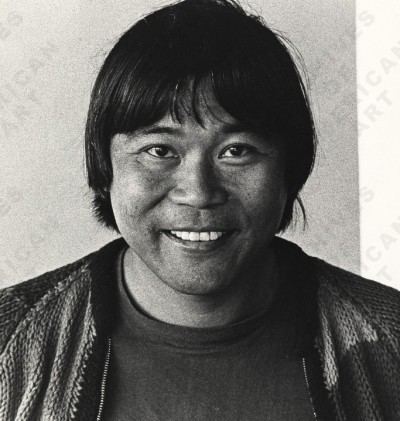 | ||
Died 1989, San Francisco, California, United States | ||
Valledor Leo 利奧華力多耳(1936-1989) Abstract Expressionism American
Leo Valledor (1935–1989) was a Filipino-American painter who pioneered the Hard-edge painting style. During the 1960s he was a member of the Park Place Gallery in Soho, New York City, which exhibited many influential and significant artists of the period. He exhibited in several prominent galleries and museums, like the Graham Gallery, the San Francisco Museum of Modern Art and the M. H. de Young Memorial Museum. He was the Exhibition Director and teacher at Lone Mountain College. He is a two-time recipient of the National Endowment for the Arts Artist Fellowship Grant. He was a leader of the minimalist movement in the 1970s.
Contents
- Valledor Leo 1936 1989 Abstract Expressionism American
- Leo Valledor Curved Gallery Panel Discussion
- Early life
- Reflections on his work Critics and Historians
- Selected Solo Two person Exhibitions
- Selected Group Exhibitions
- References
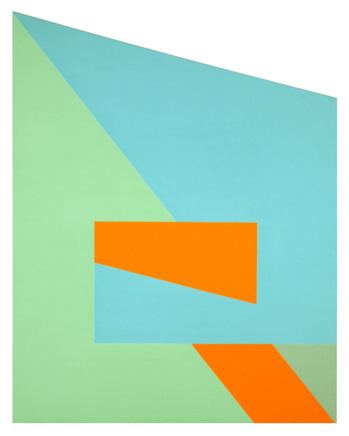
Leo Valledor: Curved Gallery Panel Discussion
Early life
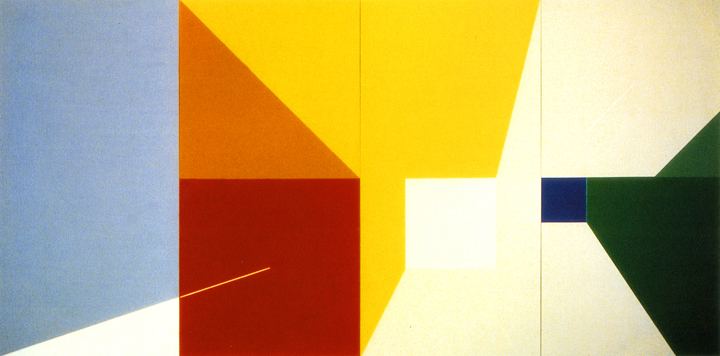
Leo Valledor was born and raised in the Fillmore district of San Francisco. He was a student at the California School of Fine Arts from 1953 to 1955 under auspices of a scholarship, however, as art historian Paul J. Karlstrom writes, "Despite a year as a scholarship student at CSFA, Valledor was largely self-taught, but he was gifted and quickly developed a gestural abstract style reflecting the influence of Mark Tobey. In addition to Tobey, his earliest influences were Paul Klee, Arshile Gorky, and Bradley Walker Tomlin." At the age of 19 in 1955 he had his first solo show "Compositions" at the historical Six Gallery. He showed his "Black and Blue Series." When he moved to New York City in 1961 he became a member of the influential Park Place Gallery in SoHo, further delving into his avant garde interests of minimalism and conceptualism. It was considered the first gallery in SoHo, and included artists like Edwin Ruda, Mark di Suvero, Peter Forakis, and Forrest Myers.
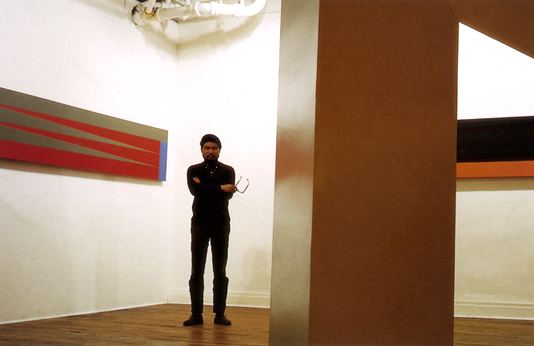
In New York at the Kaymar Gallery in March and April 1964 Valledor also exhibited with Sol LeWitt and Donald Judd. He also had a solo show at the Graham Gallery on Madison Avenue in New York City. In 1968 Valledor left New York returning to San Francisco. He exhibited there at such establishments as the San Francisco Museum of Modern Art, and the San Francisco Art Institute. He was at the vanguard of the minimalist painting movement in the mid 1970s, and later in the seventies he exhibited at the San Francisco Museum of Modern Art, Daniel Weinberg Gallery, M. H. de Young Memorial Museum, and the Los Angeles Museum of Contemporary Art. In the late 1970s and early 1980s Valledor became the Art Exhibition Director and teacher at Lone Mountain College in San Francisco. He was a guest teacher at the University of California, Berkeley. He created a roof mural for the Department of Public Works approved by the San Francisco Arts Commission. He received his first National Endowment for the Arts Artist Fellowship Grant in 1981, and received another grant in 1982. In the eighties he received a California Arts Council Artist in Residence grant in the South of Market community. He also taught at the San Francisco Art Institute. He lived in the city until his death in 1989.
Reflections on his work: Critics and Historians
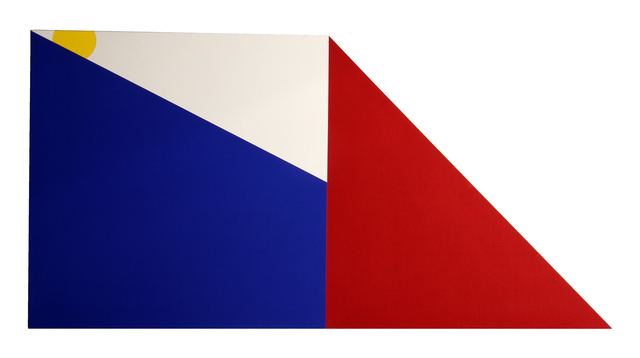
Art critics have placed his work in context with the work of Ellsworth Kelly, Barnett Newman, and Leon Polk Smith. Other art historians, like Frances Colpitt, have found his work to be in relation to Frank Stella. Colpitt states, "Less assimilable to Op art experiments of the early 1960s, Valledor's shaped canvases are more reminiscent of Frank Stella's contemporaneous work... But Skeedo (1965) is so quirky and radically shaped that it seems without precedent..." Art critic Knute Stiles reviewed Valledor's shows in San Francisco in the 1976: "He is one of a dozen modernists who subscribe to one or another of the subgroups of what might be called International Style Geometric abstraction. His work has a classical or pure form-oriented bent, but in the early '60s he emerged as a pioneer of the Minimalism which was to dominate that decade." Valledor’s work explores the juxtapositions of colors and geometric forms as metaphors for the interplay of elements in the natural world, as Lawrence Rinder explains:

We all know that at one time (especially in San Francisco) jazz, abstract expressionism and what's known as Beat poetry were all part of one culture. It may be a cliche but it was a powerful reality. One thing helped to explain the other: one thought, different languages. I can imagine how great Leo must have felt to show his art at the Six Gallery in 1955... the same year Ginsberg first read his culture-shaking poem Howl. Where Leo's art gets hard for some is right where it ought to get easy. Abandoning the gestural language of abstract expressionism (which would linger in the Bay Area for decades), he started to explore reduced palettes, geometric shapes, and the spatial dimension of color. This wasn't the end of his dive into the jazz-like spirit, it was the beginning. Geometry was his style and color was his tone.
Valledor's work is in the collections of the Achenbach Collection of San Francisco, M.H. de Young Memorial Museum, Oakland Museum of California, Seattle Art Museum, Philadelphia Museum of Art, Crocker Art Museum, National Gallery of Art, Yale University Art Gallery, St. Louis Art Museum, Philadelphia Museum of Art, Allentown Art Museum. and San Francisco Museum of Modern Art
Selected Solo & Two-person Exhibitions
The Six Gallery, 1955, 1956, 1957 – Jazzuz Series; California School of Fine Arts, 1958; Dilexi Gallery, San Francisco – Blue & Black Series, 1959; Park Place Gallery, New York, exhibits with Sol Lewitt and Robert Smithson, 1965; Graham Gallery, New York, 1966; San Francisco Museum of Modern Art, 1971; M.H. de Young Memorial Museum, 1974; San Francisco Art Institute, 1974; Los Angeles Institute of Contemporary Art, 1976; Daniel Weinberg Gallery, San Francisco, CA 1973, 1976; Modernism, San Francisco, CA 1980, 1982–83; Mitchell Algus Gallery, Chelsea, NY, 2006; Togonon Gallery, San Francisco, CA, 2006, 2008; Brian Gross Fine Art, San Francisco, CA, 2016
Selected Group Exhibitions
The Six Gallery, San Francisco, CA, 1955, 1956; Walker Art Centre, Minneapolis, MN, 1955; Dilexi, San Francisco, CA 1958, 1959; San Francisco Museum of Modern Art 1961, 1965, 1974, 1977; Kaymar Gallery, NY, 1964 American Express Pavillon, 1964 New York World's Fair, 1965; Smithsonian Institution, Washington DC, 1965; Lannan Foundation Museum, Palm Beach, 1966; Aldrich Contemporary Art Museum, Ridgefield, Conn, 1966; Art in the City, Institute of Contemporary Art, Penn, PA, 1967; Dallas Museum of Art, 1967; Institute of Contemporary Art, PA, 1967; Tocuato de Tella Instituto, Buenos Aires, Argentina, 1967; Museo del Arte, Caracas, Venezuela; San Francisco Art Institute, 1968, 1970, 1973, 1974, 1976, 1985; Belca House, Kyoto Japan, 1982; Sun Gallery, Hayward, 1985; Redding Museum and Art Center, Shasta College, CA, 1985; John Berggruen Gallery, 1985; San Jose Institute of Contemporary Art, 1985; Bluxome Gallery, 1987, 1988; 871 Fine Arts, San Francisco, 1988; Mitchell Algus, NY, 1995; Mendelhall Sobieski Gallery, Los Angeles, Shanghai, 2006; Togonon Gallery, San Francisco, CA, 2006, 2007, 2009, 2010, 2011; Blanton Museum of Art, Austin, TX – The Park Place Group, 2008–2009; M. H. de Young Memorial Museum, San Francisco, CA – Asian American Modern Art, October 2008 - 2009. San Francisco Museum of Modern Art- Abstract Art in the U.S. 1955-1965, January 2011
